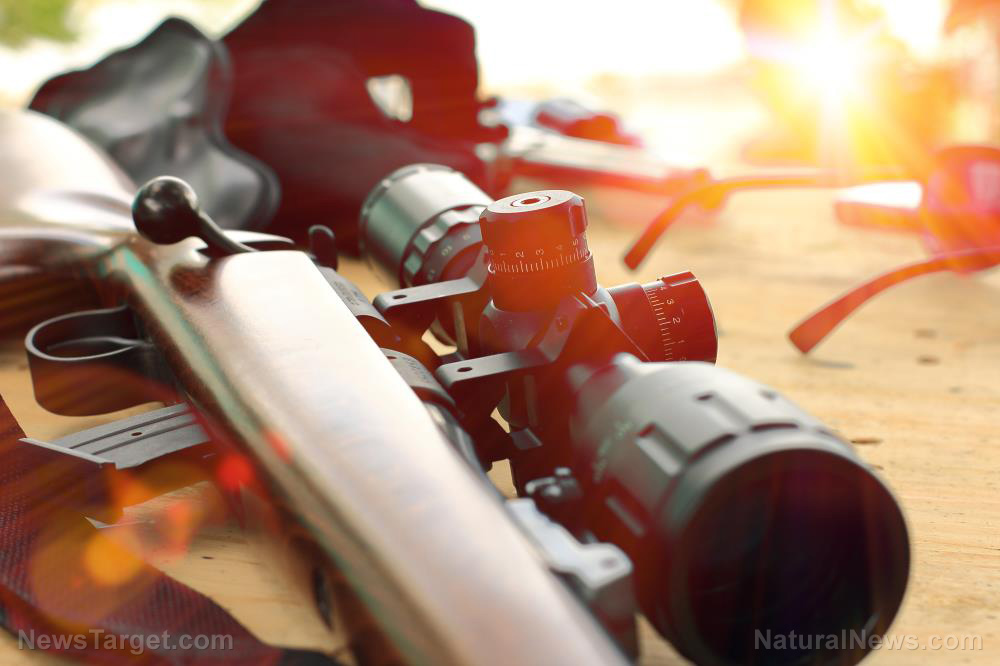
Advertisement
In any SHTF scenario, it will be difficult to determine how things would play out. This is why a good prepper should always prepare for any situation, dangerous or not. One thing a prepper should always keep within arm’s reach when SHTF is a weapon to defend themselves with. More often than not, a decent rifle will be more than enough to get the job done. However, ammo will be a scarce resource even if you’ve prepared plenty beforehand. This emphasizes the need for accurate and efficient shooting to conserve as much ammo as you can. To help with this, there’s nothing better than adding a good optic. But which one should you pick? (h/t to Survivopedia.com)
A sight for sore eyes
If you find yourself in a situation that calls for the use of a rifle, every shot needs to count. Each missed shot is not only a bullet wasted, but it also increases the risk of you getting injured or killed. To circumvent this, one of the tried and tested methods of improving one’s accuracy is attaching a consistent and quality rifle scope. (Related: Ammo stockpiling: Four more reasons buying more ammo is one of the smartest things you’ll ever do before SHTF.)
But what traits does it need to be considered of high quality? There could be many considerations but only a handful are necessary when dealing with an SHTF scenario: versatility, durability, and longevity.
Being useful in a variety of situations is one thing any prepper should be looking at when it comes to SHTF gear and firearms are no exception. When things go south, you may or may not have the time to take your entire stockpile with you if you need to bug out. Your rifle can serve as both a hunting tool and a weapon for self-defense. Having one scope useful in both situations can significantly lighten your load to make room for other things, instead of having two optics specialized for one purpose each.
In addition, SHTF gear should be able to perform over long periods without breaking. This is to reduce the need for getting replacements or repairs as they could be quite problematic and widely unavailable in an SHTF scenario. When it comes to optics, you should decide on choosing products made by established and solid manufacturers with a reputation for toughness and durability. If you happen to have a high-tech scope on hand, choosing one with a good battery life should be one of your priorities to reduce the need for charging.
Which type is the right one for you?
Once you know what to look for in a rifle optic, you need to decide on which type to pick. Fortunately, there are only three types you could choose from: red dot sights, holographic sights, and magnification scopes. Each one has its own purpose and could even be combined with other types to increase the versatility of your scope.
A red dot sight is a blanket term used to describe scopes like reflex sights, holo-sights, and prism scopes. While they all function similarly, they can function in different ways. Overall, the red dot sight, as the name suggests, is a scope with a small red dot at the center that allows for quick target acquisition compared to iron sights and magnified scopes. These scopes should be used with both eyes open to allow for an unlimited field of view, giving you a big advantage in close-quarters self-defense. However, this does make it difficult for people to hit targets over a long distance without proper training and practice.
Holographic sights are the high-tech big brothers of red dot sights boasting unparalleled target acquisition with its famous circle-and-dot reticle projection. The size of the reticle makes it very forgiving of how you shoot. All you need to do is put the dot on your target and pull the trigger. Unfortunately, this optic is considered not optimal for true SHTF scenarios because of how low the battery life is compared to other types of scopes. In addition, the technology is more complex, which might make it difficult to make repairs. However, if you manage to figure out a way to keep a holographic scope properly maintained, it would be an essential addition to your arsenal.
Last, but not the least comes the classic magnification scopes. These types of scopes come in two types: fixed and variable. Fixed scopes, as the name implies, have a set magnification on its lens. While it limits the versatility of the scope, it makes up for it in endurance and convenience. These scopes do not need batteries, are very light, and are built to last in many situations. On the other hand, variable magnification scopes allow you to adjust the magnification level, making it quite versatile in many situations. However, these scopes lack the illumination needed for fast target acquisition, which makes it less ideal in close-quarter combat. Also, it limits your field of view as you need to keep one eye closed to focus on what you can see through the scope.
Now that you know the ins and outs of each scope, picking an optic is all up to your tastes and how you’d like to use your weapon. However, having any type of optic on your rifle can drastically improve your chances of survival when SHTF.
Sources include:
Advertisement
Advertisements
















